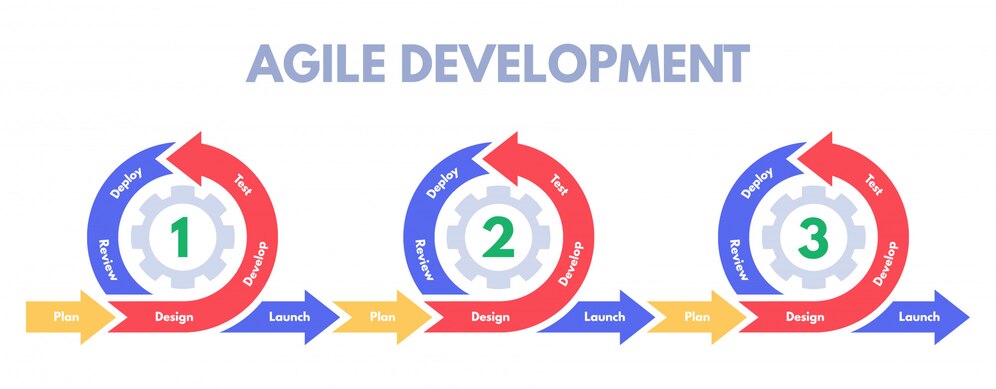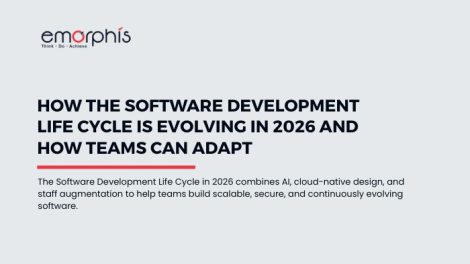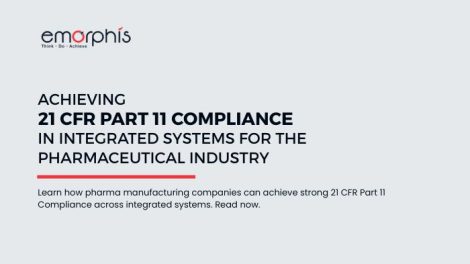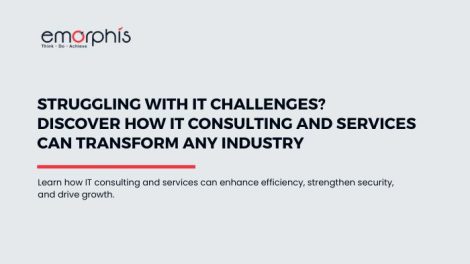Navigating the dynamic waters of project management, your success hinges on choosing the right methodology, will you ride the waves with Agile or sail smoothly with Waterfall? Let’s look at Agile vs Waterfall. Each has its own set of principles, advantages, and challenges.
Further, we will check the various aspects to understand Agile vs Waterfall methodology. Moreover, it is crucial to explore their core use first and examine how they apply to various project scenarios.

Understanding the Waterfall Methodology
The Waterfall methodology is one of the oldest and most traditional approaches to project management. In fact, it is a linear and sequential model. Moreover, it means that each phase of the project must be completed before the next one begins. As a matter of fact, this methodology is highly structured, with each phase serving as a foundation for the next.
Furthermore, the Waterfall methodology is divided into distinct phases, requirement gathering, system design, implementation, testing, deployment, and maintenance. Moreover, this approach is particularly beneficial for projects where the requirements are well-defined and unlikely to change. Also, the Waterfall model’s clear structure can make it easier to manage and predict project timelines and costs.
Advantages of the Waterfall Methodology
One of the primary advantages of the Waterfall methodology is its simplicity and also, ease of use. In fact, its linear nature ensures that project managers and team members can follow a straightforward path from start to finish. Additionally, each phase must be completed before the next begins. Moreover, it allows for thorough documentation and review at each stage.

Furthermore, the Waterfall methodology can be more cost-effective for certain types of projects. Since the requirements are defined at the beginning, it reduces the likelihood of costly changes and rework later on. Moreover, it can be easier to manage stakeholder expectations. As they have a clear understanding of what to expect at each stage of the project.
Challenges of the Waterfall Methodology
However, the Waterfall methodology is not without its challenges. In fact, one of the most significant drawbacks is its inflexibility. As a matter of fact, if project requirements change mid-way, it can be difficult and costly to go back and make adjustments. Also, this lack of flexibility can lead to issues if unforeseen problems arise during the development process.
Moreover, the Waterfall model can sometimes lead to longer project timelines. Since each phase must be completed before the next one begins, any delays in one phase can have a cascading effect on the overall timeline. Furthermore, the final product is not visible until the end. Hence, stakeholders would not see the project until it is too late to make significant changes.
Understanding the Agile Methodology
In contrast to the Waterfall methodology, Agile is an iterative and incremental approach to project management. Agile vs Waterfall methodology discussions often highlight Agile’s flexibility and adaptability. In fact, Agile methodologies prioritize collaboration, customer feedback, and small, rapid releases.
Moreover, Agile methodologies break projects into smaller units called sprints or iterations, which typically last two to four weeks. At the end of each sprint, a working product increment is delivered, also, feedback is gathered for the next iteration. Also, this constant feedback loop allows teams to adjust and refine their approach as the project progresses.
Advantages of the Agile Methodology
A major benefit of Agile is its adaptability. In fact, Agile methodologies are designed to accommodate changes in project requirements, even late in the development process. This makes it particularly suitable for projects with high levels of uncertainty or those requiring frequent adjustments.
Furthermore, Agile encourages continuous improvement and innovation. Since the project is broken into smaller, manageable chunks, teams can experiment and make adjustments based on real-time feedback. Moreover, stakeholders and customers are involved throughout the project, ensuring that the final product meets their needs and expectations.

Also, Agile methodologies can lead to faster delivery times. By focusing on delivering small, functional pieces of the project incrementally, teams can also release products more quickly. Moreover, providing immediate value to customers. Additionally, this approach can improve team morale. Also, productivity, as team members see the tangible results of their work more frequently.
Challenges of the Agile Methodology
However, Agile methodologies also come with their own set of challenges. One of the primary challenges is the need for a high level of collaboration also, communication. In fact, Agile teams must work closely with stakeholders and customers. This is where it can be difficult if they are not readily available or engaged.
Moreover, Agile methodologies require a cultural shift within organizations. Teams need to be comfortable with ambiguity and change. Moreover, this can be challenging for those accustomed to more structured approaches like Waterfall. Additionally, Agile can sometimes lead to scope creep, where the project’s scope expands due to continuous changes and additions.
Furthermore, while Agile can improve delivery times, it can also lead to issues with quality if not managed properly. Since the focus is on delivering functional pieces quickly, there is a risk of overlooking thorough testing. Also, documentation can result in defects and rework later on.
Choosing Between Agile vs Waterfall Methodology
When deciding between Agile vs Waterfall methodology, it is essential to consider the specific needs and constraints of the project. As a matter of fact, each methodology has its own strengths and weaknesses. The choice should be based on the project’s requirements, also the team’s capabilities, and the organization’s culture.
In the context of Agile vs Waterfall, for projects with well-defined requirements also, a clear timeline. The Waterfall methodology might be more suitable. Moreover, if the project requires extensive documentation and regulatory compliance. A waterfall’s structured approach can be beneficial also if the project stakeholders prefer a more predictable and controlled environment. Then also, Waterfall might be the better choice.
In contrast to Agile vs Waterfall, Agile is ideal for projects with high uncertainty and a need for flexibility. In fact, if the project involves innovative and complex work that requires frequent adjustments. Moreover, Agile’s iterative approach can provide significant advantages. Furthermore, if the team and stakeholders are comfortable with continuous collaboration and change. Also, Agile can lead to faster and more responsive delivery.
Agile vs Waterfall Methodology
Let’s take a closer look on the Agile vs Waterfall methodology differences in the following table form. This will help to catch more details on the various aspects of project management. Also, development which we want to choose from Agile vs Waterfall.
Aspect | Waterfall | Agile |
|---|---|---|
Project Management Approach | Waterfall follows a sequential approach, where each phase (requirements, design, implementation, testing, deployment, maintenance) is completed before moving on to the next. | Agile follows an iterative and incremental approach, dividing the project into smaller iterations (sprints) with continuous feedback and adaptation. |
Flexibility and Adaptability | Waterfall typically has fixed scope and requirements, making it less adaptable to changes once the project starts. | Agile emphasizes flexibility and adaptability, allowing for changes to requirements and priorities throughout the project lifecycle. |
Client Involvement | In Waterfall, client involvement is usually limited to the beginning and end of the project, with minimal opportunities for feedback during development. | Agile encourages active client participation throughout the development process, with regular feedback sessions and demos to ensure alignment with client expectations. |
Risk Management | In Waterfall, risks are identified and addressed at the beginning of the project through comprehensive planning and documentation. | Agile employs continuous risk assessment and mitigation throughout the project, with a focus on identifying and addressing potential issues early in the development process. |
Quality Assurance | Waterfall testing primarily occurs at the end of each phase or at the end of the project, often leading to longer feedback loops and potential delays in identifying defects. | Agile integrates testing throughout the development process, with a focus on frequent testing and continuous integration to ensure high-quality deliverables. |
Team Collaboration | Waterfall typically follows a hierarchical structure with clearly defined roles and responsibilities, often leading to siloed teams and limited collaboration between different functional areas. | Agile promotes cross-functional teams that collaborate closely throughout the project, with an emphasis on open communication, shared ownership, and collective decision-making. |
Time-to-Market | Waterfall projects generally have longer development cycles due to comprehensive planning and documentation requirements, potentially resulting in slower time-to-market. | Agile projects have shorter development cycles and incremental delivery of features, enabling faster time-to-market and the ability to respond quickly to changing market demands. |
Cost Management | In Waterfall, cost estimates are based on detailed upfront planning, and changes to scope or requirements may lead to additional costs. | Agile offers more flexible cost management, with the ability to adjust priorities and features based on available resources and evolving requirements. |
Client Satisfaction | Client satisfaction in Waterfall may be harder to gauge until the end of the project when the final deliverables are presented. | Agile continuously monitors client satisfaction throughout the project, with regular feedback loops and opportunities for course correction based on client input. |
Complexity Handling | Waterfall is suited for projects with well-defined requirements and stable scope, but may struggle to handle complex or evolving requirements. | Agile is better equipped to handle complex projects or those with changing requirements, thanks to its iterative and adaptive nature. |
Documentation | Waterfall methodologies rely heavily on comprehensive documentation at each phase, including requirements specifications, design documents, and project plans. | Agile methodologies prioritize working software over extensive documentation, although necessary documentation is still maintained to support collaboration, knowledge transfer, and compliance requirements. |
Change Management | Waterfall methodologies often have formal change management processes in place, requiring extensive paperwork and approvals for any changes to scope or requirements. | Agile methodologies embrace change and have built-in mechanisms for managing change, with the ability to adapt to evolving requirements throughout the project. |
Predictability | Waterfall projects provide higher predictability in terms of project timeline and deliverables, as the scope and requirements are defined upfront. | Agile projects may have lower predictability initially, but they offer greater flexibility to adjust to changing priorities and market conditions. |
Customer Collaboration Tools | Waterfall projects may use traditional communication methods such as emails and meetings for client interaction. | Agile projects often utilize collaboration tools like project management software, issue trackers, and communication platforms to facilitate real-time collaboration and feedback. |
Project Control | Waterfall methodologies provide strong project control through detailed planning and documentation, with progress measured against predefined milestones. | Agile methodologies offer project control through frequent inspections, adaptability to changing requirements, and regular feedback loops, enabling course correction as needed. |
Team Morale | Waterfall projects can sometimes lead to lower team morale, especially if changes or issues arise late in the project cycle and require significant rework. | Agile projects often foster higher team morale due to increased collaboration, ownership, and the ability to see tangible progress through frequent deliverables. |
Scalability | Waterfall methodologies may face challenges in scaling to larger projects or distributed teams, as coordination and communication become more complex. | Agile methodologies are inherently scalable, with frameworks like Scrum and Kanban designed to accommodate large projects and distributed teams through iterative and incremental development. |
Stakeholder Engagement | Waterfall methodologies often involve stakeholders primarily at the beginning and end of the project, with limited involvement during development. | Agile methodologies encourage continuous stakeholder engagement throughout the project, fostering collaboration and ensuring alignment with business goals. |
Risk Tolerance | Waterfall projects tend to have lower risk tolerance, as changes late in the project lifecycle can be costly and disruptive. | Agile projects typically have higher risk tolerance, with built-in mechanisms for managing and mitigating risks throughout the development process. |
Innovation | Waterfall methodologies may prioritize stability and predictability over innovation, as changes are more difficult to accommodate once the project is underway. | Agile methodologies promote innovation by allowing for experimentation, iteration, and adaptation to emerging technologies and market trends. |
Requirements Management | Waterfall methodologies rely on detailed upfront requirements gathering and documentation, with a focus on defining the complete scope of the project before development begins. | Agile methodologies employ iterative requirements gathering and prioritization, with the flexibility to adjust requirements based on feedback and evolving business needs. |
Customer Satisfaction | Waterfall projects may face challenges in meeting evolving customer needs and expectations, particularly if requirements change after development has begun. | Agile projects prioritize customer satisfaction through early and continuous delivery of valuable software, enabling rapid feedback and adaptation to customer preferences. |
Performance Measurement | Waterfall projects often measure success based on adherence to project plans, budget, and timeline, with a focus on meeting predefined milestones. | Agile projects measure success based on the delivery of working software, customer satisfaction, and the ability to adapt to changing market conditions. |
Team Empowerment | Waterfall methodologies may involve top-down decision-making and limited autonomy for team members, leading to reduced empowerment and innovation. | Agile methodologies empower cross-functional teams to make decisions collaboratively, fostering a culture of ownership, accountability, and continuous improvement. |
Project Visibility | Waterfall projects may have less visibility into progress and potential issues until later stages of development, when it may be more difficult and costly to address them. | Agile projects provide greater visibility into progress, risks, and impediments through regular inspections, transparency, and open communication within the team and with stakeholders. |
Project Planning | Waterfall requires extensive planning upfront, often involving detailed documentation and resource allocation before development begins. | Agile utilizes adaptive planning, with plans evolving throughout the project as new information and insights emerge. Planning is iterative and flexible, allowing for adjustments based on feedback and changing requirements. |
Organizational Adaptability | Waterfall methodologies may be less adaptable to changes or disruptions, as they rely on predefined processes and structures. | Agile methodologies promote organizational adaptability and resilience by fostering a culture of continuous learning, experimentation, also adaptation. Teams are empowered to respond quickly to changes in market conditions, technology, or business priorities, maximizing agility and competitive advantage. |
Project Governance | Waterfall projects typically have a centralized governance model, in fact, with decision-making authority centralized at the top and formal processes for change control and project oversight. | Agile projects often adopt a more decentralized governance model, with decision-making authority distributed across self-organizing teams. Moreover, governance is focused on enabling teams to deliver value iteratively and continuously, with a balance of autonomy and alignment with organizational goals. |
Team Size | Waterfall projects may be better suited for larger teams with clearly defined roles and responsibilities, as coordination and communication overhead can moreover, increase with team size. | Agile projects can accommodate teams of various sizes, with frameworks like Scrum and Kanban providing guidelines for effective collaboration and communication within small, also, cross-functional teams. In fact, agile methodologies emphasize self-organizing teams and collaboration over extensive hierarchy, enabling agility and innovation regardless of team size. |
Project Dependencies | Waterfall projects may have more rigid dependencies between phases, in fact, with each phase relying on the completion of the previous phase before proceeding. | Agile projects aim to minimize dependencies between tasks and phases, it also helps enable parallel development, continuous integration, and faster feedback loops. Agile methodologies promote autonomy and collaboration within teams moreover, reducing bottlenecks and delays caused by dependencies. |
Conclusion
In conclusion, the choice between Agile vs Waterfall methodology depends on various factors. In fact, it can include project requirements, team dynamics, and organizational culture. Both methods offer unique benefits and challenges, and understanding these differences is crucial for successful project management. As a matter of fact, by carefully considering the nature of the project and the needs of the stakeholders. Also, project managers can make informed decisions that lead to successful outcomes. Moreover, blending elements of both methodologies. Also, known as a hybrid approach, provides a balanced solution that leverages the strengths of each method.

To delve deeper into the intricacies of Agile and Waterfall methodologies. Also, to explore how they can be optimally applied to your projects. Further, consider connecting with the software development experts at Emorphis Technologies.
Our team offers comprehensive insights and tailored solutions to help you choose the best approach for your needs. Additionally, if you’re looking to innovate with AI software development, we can guide you through the latest advancements. Also, the best practices in this cutting-edge field.
Reach out today to enhance your project management strategies. Moreover, leverage the power of AI in your software product development endeavors.







